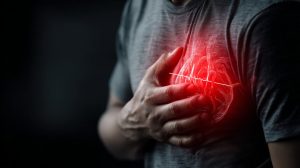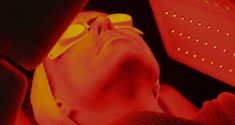A preliminary analysis to be presented at the American Heart Association’s 2025 Scientific Sessions found that more artificial light at night correlates with increased stress signals in the brain, inflamed blood vessels, and a higher risk of heart disease. The researchers described artificial light at night, often referred to as nocturnal light pollution, as nearly ubiquitous in modern urban environments. This first-of-its-kind work combined brain imaging and satellite measurements to reveal a biological pathway that could link nighttime brightness to cardiovascular risk.
Key Findings: Too Much Light, Higher Risk
“We know that environmental factors such as air pollution and noise pollution can lead to heart disease by stressing our nerves and blood vessels. Light pollution is very common, but we don’t know much about how it affects the heart,” said the study’s lead author, Shady Abohashem, M.D., M.P.H., director of cardiac PET/CT imaging studies at Massachusetts General Hospital and assistant professor at Harvard Medical School in Boston.
All participants were examined using the same combined positron emission tomography/computed tomography (PET/CT) scan. The study included 450 adults who did not have heart disease or active cancer. “This is a routine test at my hospital,” said Abohashem. “The CT part provides detailed anatomical information, while the PET part shows metabolic activity in the tissue. By combining both imaging techniques, we can measure brain stress activity and arterial inflammation in a single scan.”
- People who were exposed to higher levels of artificial light at night had higher brain stress activity, blood vessel inflammation, and a higher risk of serious cardiac events. This information was compiled from medical records and evaluated by two cardiologists who were blinded, meaning they did not have any information that could influence their decisions.
- The higher the exposure to artificial nighttime light, the higher the risk of developing heart disease. Each standard deviation of light exposure was associated with an approximately 35% and 22% increased risk of heart disease over a five- and ten-year observation period, respectively. These associations remained even after taking into account traditional risk factors and other socioeconomic stresses such as noise pollution and socioeconomic status.
- Furthermore, these cardiac risks were higher in participants who lived in areas with additional social or environmental stresses, such as high traffic noise or lower neighborhood income.
- Over a 10-year observation period, 17% of participants had serious heart disease.
Stress Pathways and Vascular Inflammation
The researchers found a nearly linear relationship between nighttime light and heart disease: the more nighttime light you are exposed to, the higher the risk. Even a slight increase in nighttime light was associated with greater stress on the brain and arteries. When the brain perceives stress, it activates signals that can trigger an immune response and inflame blood vessels. Over time, this process can contribute to arteriosclerosis and increase the risk of heart attacks and strokes. To counteract the effects of artificial light at night, Abohashem suggested that cities could reduce unnecessary outdoor lighting, shield streetlights, or use motion-sensitive lights. On a personal level, “people can limit indoor light at night by keeping their bedrooms dark and avoiding screens such as televisions and personal electronic devices before bedtime. “
”These findings are new and add to the evidence that reducing exposure to excessive artificial light at night is a public health issue,“ said Julio Fernandez-Mendoza, Ph.D., DBSM, FAHA, member of the editorial committee of ”Multidimensional Sleep Health: Definitions and Implications for Cardiometabolic Health: A Scientific Statement From the American Heart Association” (Multidimensional Sleep Health: Definitions and Implications for Cardiometabolic Health: A Scientific Statement From the American Heart Association).
Circadian Health: Current Guidelines and Broader Implications
On October 28, the association published a scientific statement on the role of circadian health in cardiometabolic health and disease risk. The new statement also points out that light pollution is an important factor that disrupts the internal clock and suppresses melatonin production, delays the time of falling asleep, and even in small amounts can be associated with an increased risk of cardiovascular disease.
“We know that too much artificial light at night can be harmful to health, particularly increasing the risk of heart disease. However, we did not know how this harm occurs,” said Fernandez-Mendoza. “This study examined one of several possible causes, namely how our brain responds to stress. This response appears to play a major role in linking artificial light at night to heart disease.” Fernandez-Mendoza, who was not involved in the study, is also a professor of psychiatry, neuroscience, and health sciences and director of behavioral sleep medicine at Pennsylvania State University College of Medicine in Hershey, Pennsylvania. The study had several strengths, including the use of state-of-the-art PET/CT imaging to measure stress in the brain and inflammation of the arteries, combined with satellite light data and long-term follow-up of cardiac events.
However, the study also has some limitations. Importantly, it is an observational study, meaning it is an analysis of previously collected information; so it cannot prove a direct link between the variables studied. Second, the study included participants who received medical care in only one hospital system, meaning that the participant group may not be representative of a diverse group of people and the results cannot be generalized to a larger population.
Details of the Study
The researchers examined the health records of 466 adults, including 43% men, with an average age of 55. Of the participants, 89.7% were white and 10.3% were non-white. All participants underwent a PET/CT scan at Massachusetts General Hospital in Boston between 2005 and 2008. Exposure data were obtained from the 2016 New World Atlas of Artificial Night Sky Brightness, which combines upward radiation data from the Visible Infrared Imaging Radiometer Suite Day/Night Band aboard the Suomi National Polar-orbiting Partnership satellite with radiation transfer models to estimate the brightness of the zenith sky near the ground. Artificial brightness is defined as the zenith luminance of the night sky attributable solely to human-generated light sources, excluding natural sources such as starlight, air glow, and moonlight. The amount of nighttime light at each person’s place of residence was measured, as were stress signals in the brain and signs of arterial inflammation on the scans.
Study participants were scanned between 2005 and 2008 and followed up retrospectively until the end of 2018. During the follow-up period, 79 participants (17%) had serious heart problems. “This study shows that light pollution is more than just a nuisance; it may also increase the risk of heart disease. We hope that doctors and policymakers will consider nighttime light exposure when developing prevention strategies,” Abohashem said. The researchers would like to extend this work to larger, more diverse populations, test measures to reduce nighttime light exposure, and investigate how reducing light exposure might improve heart health.









